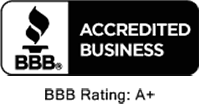Minneapolis MN Wild Animal Management
Bats in the attic? Raccoons or Squirrels in the chimney? If you live in Minnesota, you will likely encounter a vast array of different wild animals. Moles, mice, snakes, bats, squirrels, or raccoons may be making a nice home in your yard, garage, attic, or walls of your house. In nature these animals may seem beautiful and peaceful, but in your yard, garden or in the house? Not so much! And with winter on the way, they’re ALL making their rounds, looking for food and shelter. YOUR home may be just the place they’re looking for.
Keep Wild Animals Out!
Have you taken a good look at your house lately? Do you know if you have deteriorated trim and fascia boards, holes in attic vents, or an open chimney? While you may not be keeping close tabs on the condition of your house, you can bet the critters in your neighborhood are!
Raccoons, skunks, squirrels, and other animals may seek shelter in your chimney or attic or under your porch or deck. A few simple steps can keep unwelcome visitors where they belong… out of your home. While you’re getting your house ready for fall and winter, its a good time to make sure it’s wild life-proofed as well.
Openings into your house are not only attractive to animals but they also allow heat to escape (thereby raising energy bills), and damaging moisture to enter. Combine your fall and spring exterior tasks like gutter cleaning, limb trimming, and weatherizing with a comprehensive inspection in which you view your house through the eyes of the wild life around you. Are there cracks that an animal as small as a mouse might be able to squeeze though?
During the months when your chimney is not in use animals can use the enclosed walls of the chimney as a nice spot to build a nest. Often during inspections we find squirrel, raccoon and bird nests that have been living in uncovered chimneys. It does not take long for these little nests to become BIG problems. An uncapped chimney is a huge hole in your home!
Don’t Trap Wildlife Inside
Before closing, sealing, or capping any potential entry points, make absolutely sure there are no animals already inside. Here’s how to avoid that problem: Plug suspect entry points loosely with insulation, paper, or cloth that any animals who may be using the space inside can easily push aside. For a few days, check to see if the material has moved. If not, you can seal the opening.
Regardless of the season it is always possible that babies or young could be present. Squirrels have two litters a year; one in early spring and one in late summer/early fall. Be careful not to separate mother from young, doing so can not only result in the inhumane death of the young, but can result in the mother tearing back into the spot where she was excluded from.
Excluding Unwanted Guests
Repellents provide a temporary solution at best. To permanently prevent animals from using those same spots in the future, you’ll need to seal off any denning areas. Make sure all animals are out before sealing off any space. Remember, during the spring and summer months, it is extremely likely that the animal denning under your steps or elsewhere around your home is a female with dependent young. Make sure that mother and young are able to remain together, to prevent any of them from dying a cruel death.
If you can find the entry/exit holes, an easy way to determine if the den has been vacated is to loosely cover or fill it with a light material, such as newspaper or insulation. This way the occupant will have to push the obstruction aside to get out or come back in. If the block hasn’t moved for three to four days (and it’s not the dead of winter), the den has been vacated and it’s safe to make repairs.
These suggestions are general guidelines only. Recommended methods for resolving conflicts with wildlife may depend upon additional aspects of the situation and the species involved (bats in particular).
If you’ve had a raccoon or any other wild animals that have taken a liking to your home or attic, then you need to get it handled the correct way. Mice and rats can spread diseases like salmonella and hantavirus when they contaminate food. Rodents can also bring other pests like fleas, ticks and lice indoors and can also cause damage to a home by chewing through wood and electrical wiring.
Minneapolis MN Wild Animal Management Expert
If DIY isn’t your thing… Contact a Minneapolis MN Wild Animal Management Expert as soon as you suspect you may have a problem. After the wild animals have been removed, they will work with you to get the projects done in a timely manner, and effectively repairing the damage to structures, foundations, walls, vents, attics, roofs, to prevent it from happening again.
And while you’re at it, contact a Minneapolis Pest Exterminator to get your home pest-proofed too! Doing it soon can prevent many major problems later.




